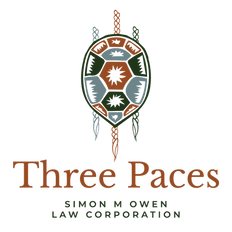Who Are We?
- organicfriend
- Apr 16
- 3 min read
I don’t need to tell you that we are sharing a heightened awareness of our identity these days. Whatever the secondary feelings this provokes, we are being forced to reckon with what this country means, and our place and purpose within it. At some point, this implicates assessments of who’s in, who’s out, who counts. In a world long ordered by Westphalian worldviews, there is no avoiding the pull that parses our single species, our inseparable earth, into mutually exclusive “sovereignties”. The nationalism that results is a persistent source of pride for some, pain for others.
This is where bright lines can become blurry. As Jody Wilson-Raybould recently reminded us, in the midst of our (understandable) national panic, Canadians should look to Indigenous peoples for wisdom, nuance and humility (and in the mirror for a disturbingly Trumpian self-portrait). This kind of learning may not lead to the most chest-thumping or sharp-elbowed of Canada brands, but might help us clarify who we really are, what we really need, and how we can draw closer to each other and our common aspirations.
Who’s in, who’s out, who counts? As anyone with a family knows, the question of ‘who belongs’ can be wonderfully messy, mobile and resistant to prefigured boundaries. Kin-centred nations draw strength from this fact. At their best, they are much more about enriching relations than creating enemies. At the same time, permeable boundaries co-exist with clear expectations (and often highly descriptive terms) for those who are navigating these questions within an Indigenous legal order.
I (mostly) enjoy getting to know where I stand, how I’m seen and what’s expected of me. This is always good learning, though sometimes it cuts into the tender egos and assumptions of those of us not used to being outed or othered. My orientation runs through language and it runs through history. To use just one example, there are a few Sm’algyax (North Coast Indigenous) words that refer to the ones who started washing in out of the fog in 1787: K’mksiwah (usually translated as ghost people; a friend told me that it also evokes sun-bleached driftwood) is the most common way to refer to outsiders. Mooksgmgyet literally means white people but also points to those who do not – or don’t yet – hold status within the complex collective identities of North Coast societies. We are not – or not yet – capable of being recognized or upholding the reciprocal roles, rights and responsibilities of WulE’isk (relations).
This is not because newcomers haven’t been invited to participate in these societies: some of the first Europeans who arrived on the coast were honoured with feasts, gifts and even names. They were given guidance and encouragement to find and form bonds of belonging. Instead, with rare exceptions, the K’mksiwah, blinded by greed and racial superiority complexes, preferred to hollow out or disparage these opportunities. Through the inverted looking glass of tyrants that is still so familiar, the hosts themselves were othered, excluded, rendered invisible or without account.
And yet, and still. Despite all these years of our offensiveness and indifference, Canadians are still being invited into relationships with host Nations throughout these lands. And, with some strange ‘help’ from our southern neighbours, we being given a small insight into what we’ve done, and who we are. How will we take this medicine?




Comments